To rescue the human enterprise in the long run requires strong action in the short run directed toward saving biodiversity and bringing the human enterprise within sustainable limits – Paul Ehrlich
The planet’s life-sustaining biosphere is in crisis. The Stockholm Resilience Centre has mapped the biosphere’s crisis as the sum of nine planet-scale ecological crises created by humanity’s “overshoot” of “planetary boundaries” …
Reversing the planet’s ecological crises as a whole presents as a seemingly impossible goal and a seemingly unsolvable problem.
The evidence of impossibility and unsolvability appears overwhelming.
For example, despite the 2015 Paris Agreement in which 195 nations pledged to limit global warming to well below 2 degrees Celsius compared to pre-industrial levels, increases in global carbon emissions are accelerating, increases in atmospheric carbon dioxide concentrations are accelerating, and increases in global mean temperature are growing past 1.5 degrees Celsius and accelerating.
If limiting global warming appears to be an impossible goal or an insoluble problem, what does that say about actually reversing the climate crisis or any of the other planet-scale ecological crises?
What if reversing the planet’s ecological crises as a whole (including the climate crisis) is a solvable problem?
What if reversing the planet’s ecological crises as a whole (including the climate crisis) is a practical and achievable goal?
In 10x Is Easier Than 2x, strategic coaches Dan Sullivan and Dr. Benjamin Hardy reveal the practicality of seemingly impossible goals:
Seemingly impossible or massive goals are highly practical because they immediately separate what works from what won’t, illuminating the few paths that have the greatest efficacy. …
Seemingly impossible goals are more practical than possible goals because impossible goals force you outside your current level of knowledge and assumptions. …
Reversing the planet’s ecological crises as a whole is a seemingly-impossible-but-practical goal because:
it forces one outside one’s current level of knowledge and assumptions about the problem, and
it forces one into an extreme simplification of the problem that illuminates the few paths (or processes) for solving the problem.
When you read my short & simple e-book, We Can Reverse the Planet’s Eco-crises, you will learn how to solve the problem of the planet’s eco-crises through:
First, extremely simplifying the problem by making an extremely simple mapping of the decision-making system (called the “Human Enterprise”) that is creating the planet’s eco-crises, and …
Second, using that extremely simple mapping to design an extremely simple information-based decision-making process (called “regenerative decision-making”) for reversing the planet’s eco-crises (including the climate crisis) as a whole.
In this “Picture-Guide” series of articles, you will learn how to reverse the planet’s eco-crises (including the climate crisis) as a whole.
What is the decision-making system that is creating the planet’s ecological crises as a whole?
The decision-making system that is creating the planet’s ecological crises as a whole is an extremely simple decision-making system for meeting human physical needs that may be called the “Human Enterprise.”
What is the Human Enterprise?
The Human Enterprise is …
… the sum of all the human decisions to extract things from the biosphere …
… things like forests, fresh water, wildlife, soils and minerals -- that may be called the “Things-We-Extract” …
… plus all the physical flows of all those Things-We-Extract – things like forests, fresh water, wildlife, soils and minerals -- from the biosphere and into the Human Enterprise …
… plus all the human decisions to use all those Things-We-Extract -- in the forms of energy, water, materials & chemicals, food & fiber and manufactures & structures …
… things like energy, water, materials & chemicals, food & fiber and manufactures & structures that may be called the “Things-We-Use” …
… plus all the physical flows of all those Things-We-Use – things like energy, water, materials & chemicals, food & fiber and manufactures & structures -- within the Human Enterprise …
... plus all the physical flows of pollution from all those Things-We-Use from the Human Enterprise back into the biosphere …
The map of the Human Enterprise depicts the entire physical relationship between human beings and the biosphere as:
the sum of all the human decisions to adopt Things-We-Extract options and Things-We-Use options for meeting human physical needs, plus
the sum of all the physical flows of Things-We-Extract (extraction flows), Things-We-Use (things-we-use flows) and pollution (pollution flows) created by all the human decisions to adopt Things-We-Extract options and Things-We-Use options …
Because human beings need both Things-We-Extract and Things-We-Use for meeting their human physical needs, the sum of all the human decisions to adopt Things-We-Extract options and Things-We-Use options may be called “Human Enterprise Decision-making” for meeting human physical needs.
The exponential growth of the Human Enterprise …
… has reached a point where the exponential damage to the biosphere from the exponentially growing extraction flows and pollution flows of the Human Enterprise is outstripping the biosphere’s capacity to regenerate itself …
This exponential damage to the biosphere is showing up as the big nine global ecological crises identified by the Stockholm Resilience Centre. These big nine planet-scale eco-crises are mapped as the orange areas beyond the biosphere’s regenerative capacity created by humanity’s “overshoot” of “planetary boundaries” …
The exponential damage to the biosphere as a whole from the extraction flows of the Human Enterprise (shown in blue-gray) is showing up as:
eco-crises of freshwater depletion
eco-crises of deforestation and expanding deserts, and
eco-crises of species extinctions and biodiversity loss …
The exponential damage to the biosphere as a whole from the pollution flows of the Human Enterprise (shown in orange) is showing up as:
eco-crises of global warming and climate change
eco-crises of synthetic pollutants such as herbicides, pesticides and microplastics
eco-crises of ozone layer depletion
eco-crises of aerosol pollutants such as dust, smoke and sulfates
eco-crises of ocean acidification, and
eco-crises of phosphorus and nitrogen pollutants in rivers and coastal seas …
If you can find a simpler and more practical mapping of the decision-making system that’s creating the planet’s eco-crises (including the climate crisis), please let me know.
In the next article of this “Picture-Guide” series, you will learn how “regenerative options” scale back the extraction flows and pollution flows of the Human Enterprise for reversing the planet’s ecological crises as a whole.
I’m super grateful for your likes, replies and shares.
Thank you for reading and aloha!
P.S. I cross-posted this article on Medium for greater reach.






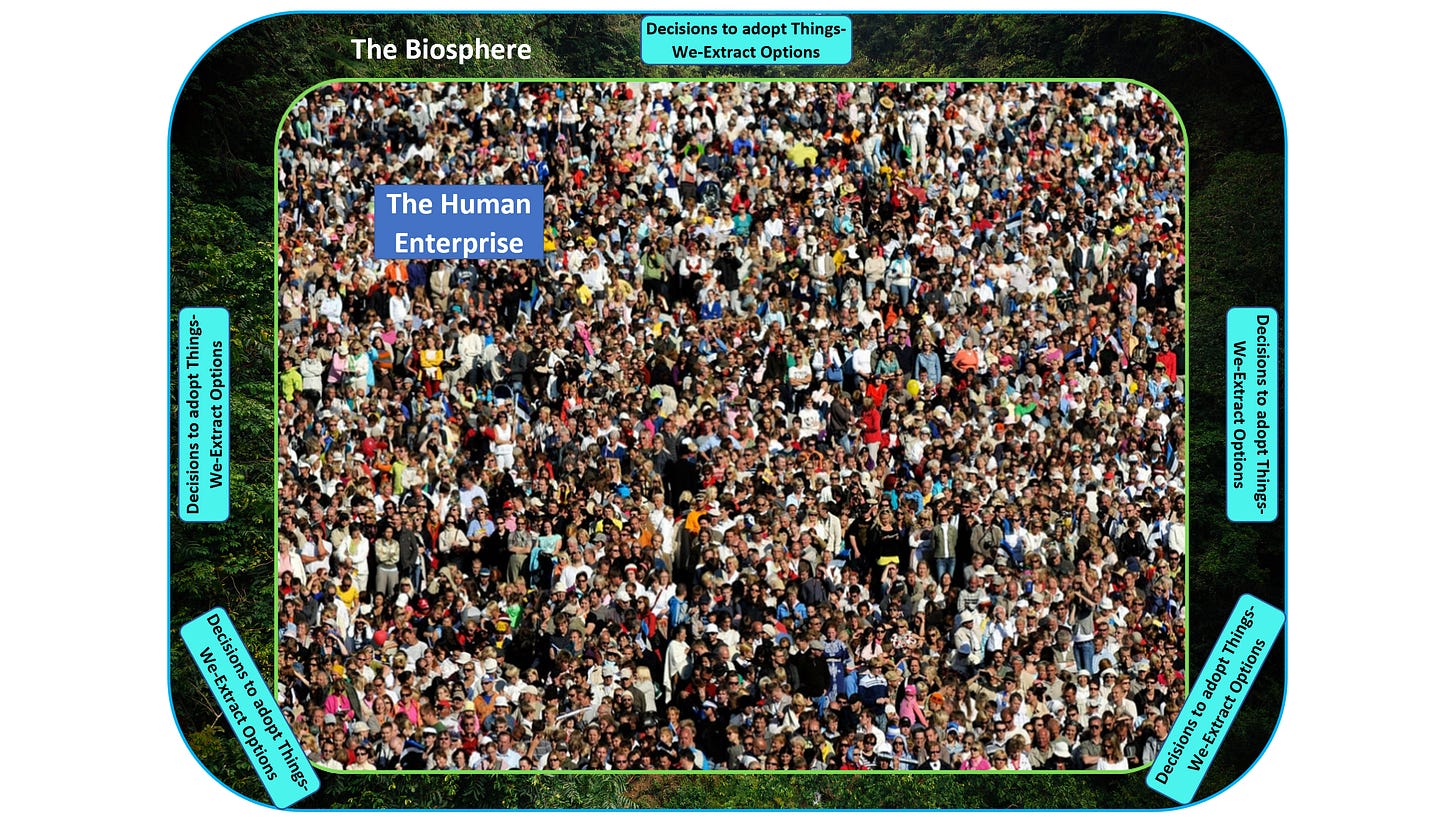

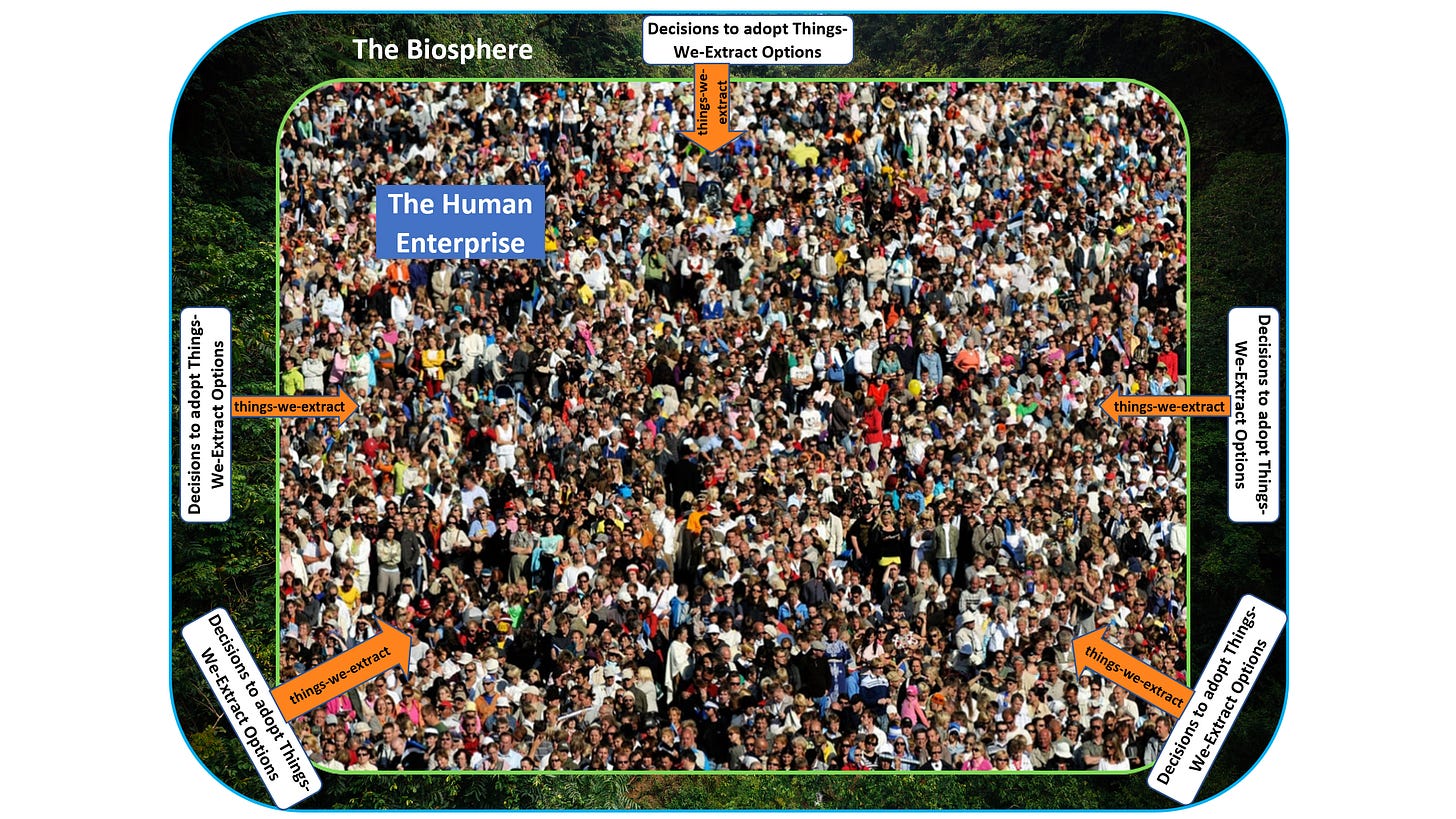


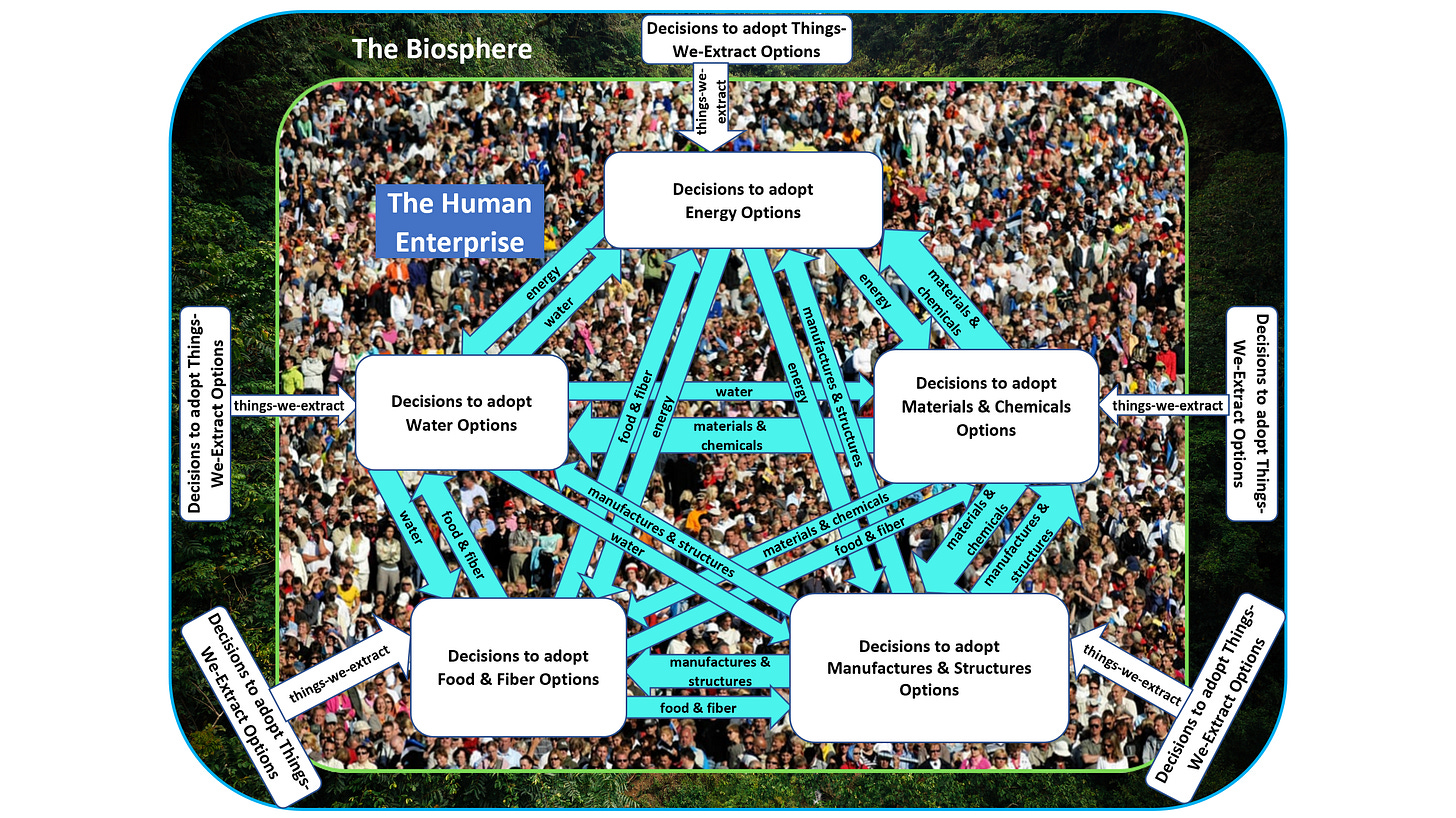
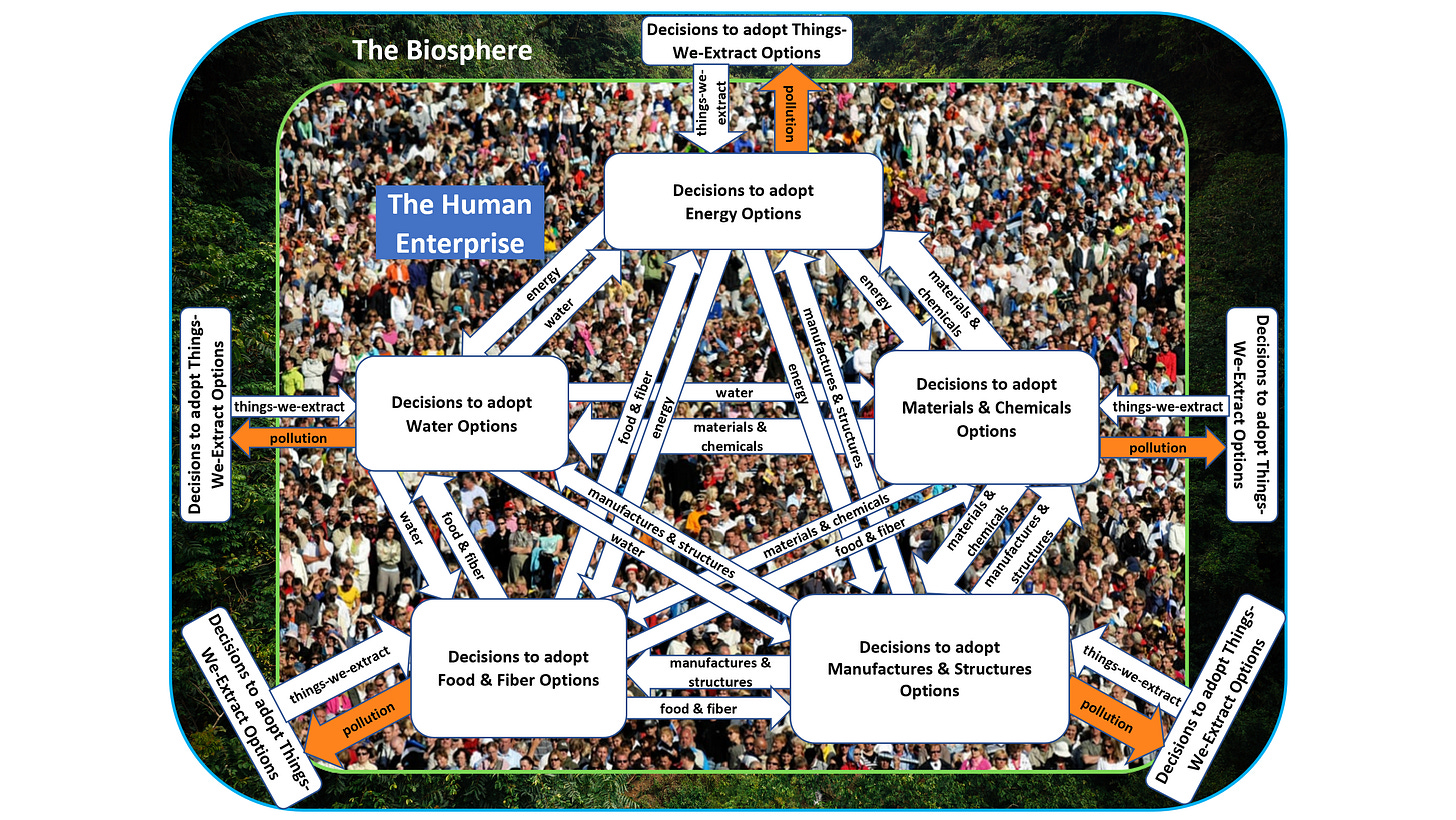

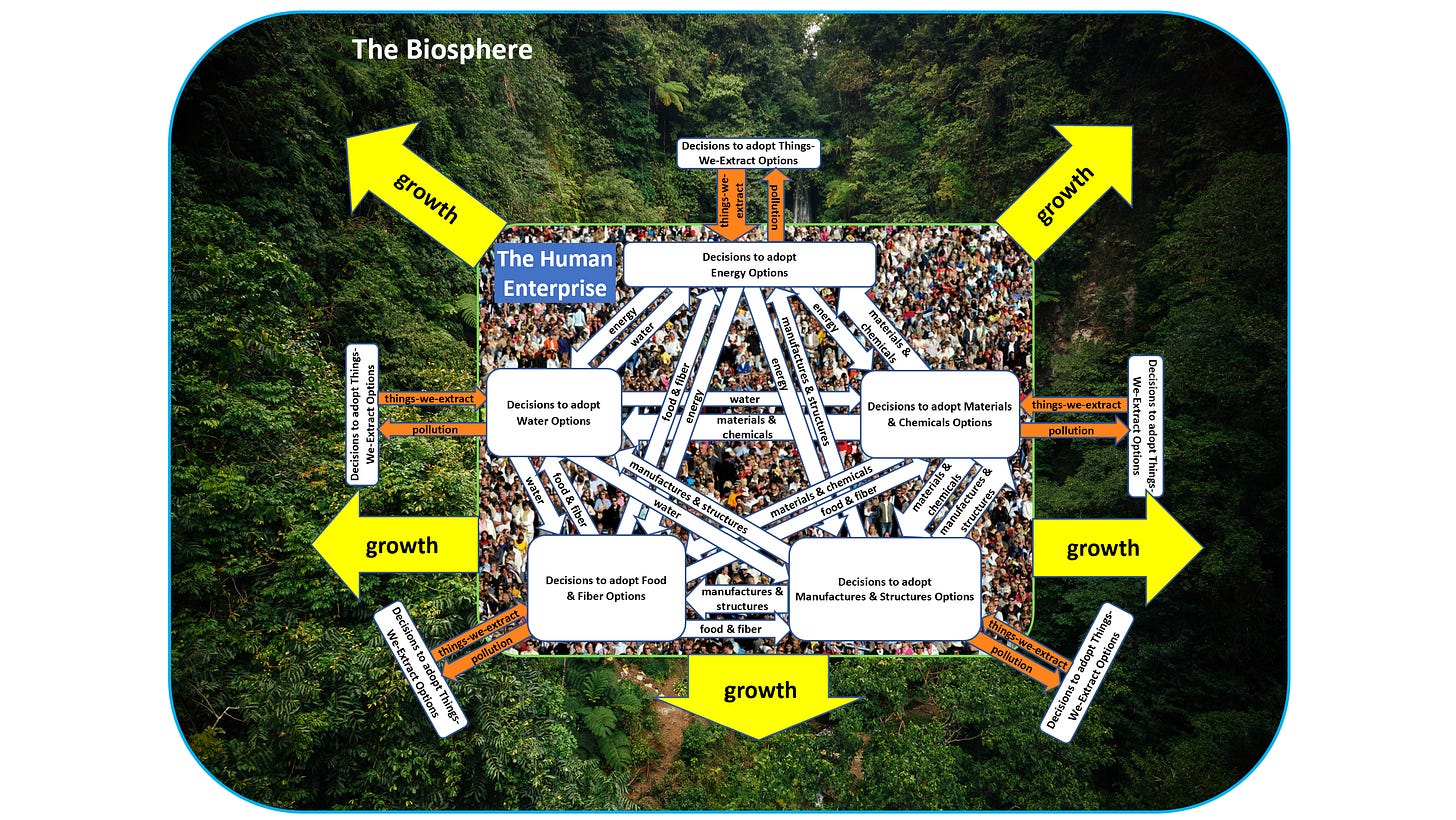



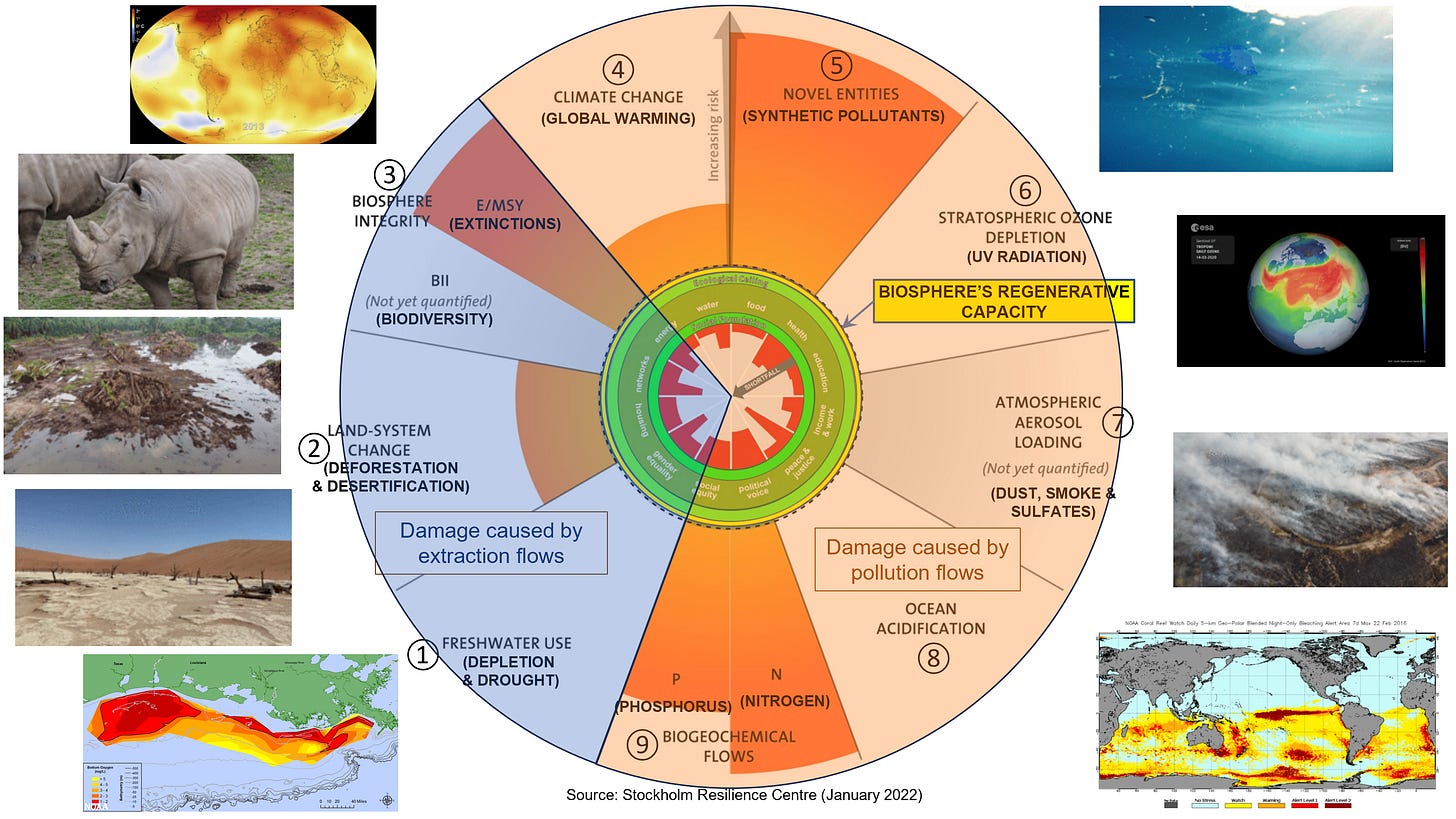

Erik, you wrote: "Reversing the planet’s ecological crises as a whole presents as a seemingly impossible goal and a seemingly unsolvable problem." It can seem overwhelming but I am grateful for people like you who continue to imagine what IS possible. Thank you!